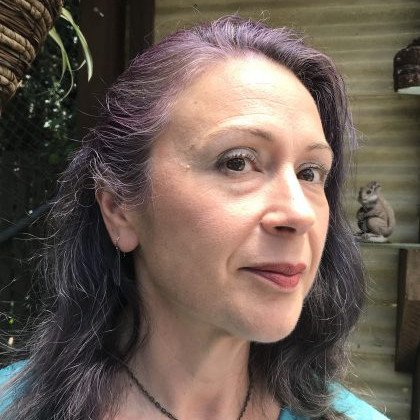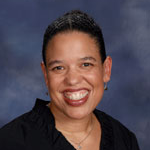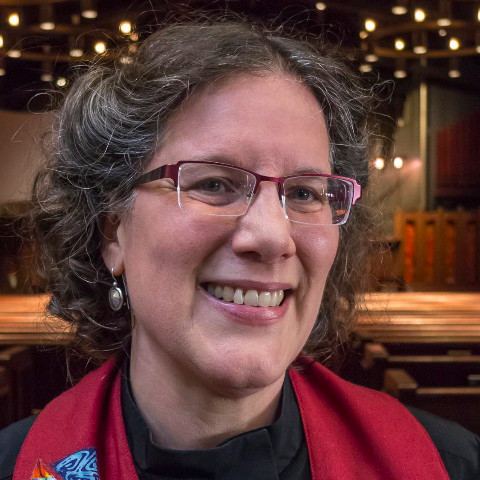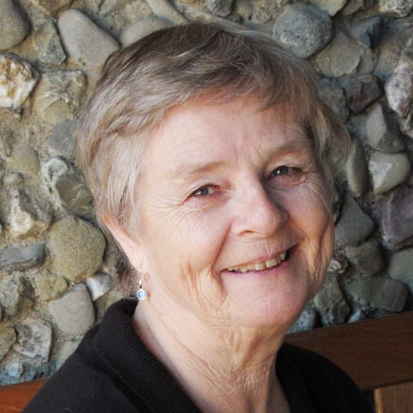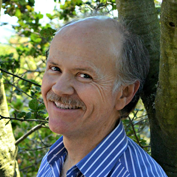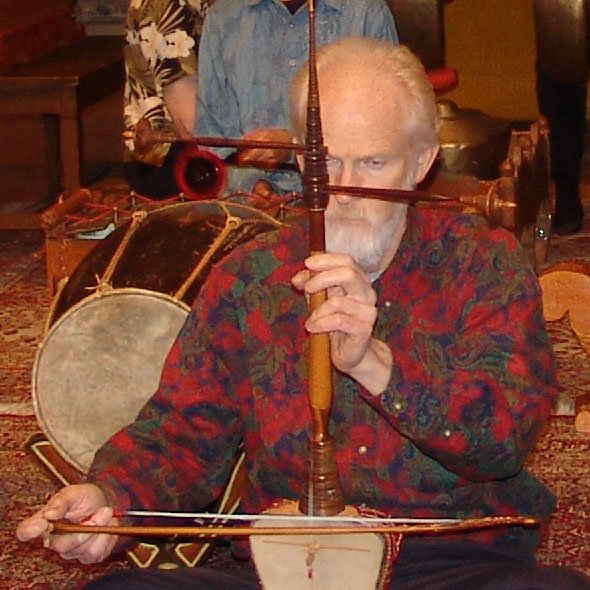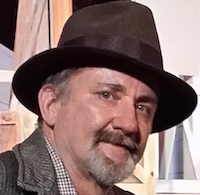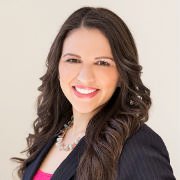1897 – 1915, We Build a Church, Enjoy Some “Prosperity”
“From the pits to a peak” might characterize this period of church history. The financial condition could be described as “desperate” for all of 1897 and well into 1898, and there was no minister from January to October. Board member Prof. Haskell was again “supply” minister with some help from guest ministers.
1897-1899 – Rev. William B. Geohegan
In 1897, Rev. William Geohegan came from the East and the Board said he was a “gentleman of broad culture and highly recommended as a preacher of more than ordinary force and eloquence.” He was properly convinced, then became enthusiastic about the congregation’s plans for a church building. He was very likable and must have served his role well for, though he stayed only two years, the church was dedicated to him.
To a banker, the Berkeley congregation’s plans for a church building early in 1898 were almost incredible. That very year, the bank required the co-signatures of ten prominent members on a church loan. Yet the members proceeded doggedly along, met Sunday, January 30th to discuss how their church would be financed – what combination of loans, mortgages plus gifts – and completed the building plans.
The Beloved Church at Bancroft and Dana, 1898
The new church was of unique design and, like most Unitarian churches built since, symbolized this faith’s difference from orthodox faiths. It was the creation of architect A.C. Schweinfurth of the office of A. Page Brown & Co. of San Francisco and New York. He had been instructed to use only the best materials for each purpose. Bernard Maybeck, then a young member of the congregation and eventually a famous California architect, worked in the same offices and may have helped with the church’s design. It was an excellent early example of the Bay Area Shingle style. The building was 40 feet square, with a basement. A member gave the redwood pillars that graced the two front entrances and there were other gifts.
Dedication was November 20, 1898, at 3:30 p.m., with four Unitarian ministers and a rabbi participating. Opinion was divided as to its architectural beauty. One passerby was heard to say “It looks like a powerhouse,” to which the pert answer, of course, was “It is a powerhouse.” Cost, as an interesting comparison, was as follows: Building proper, $5,130.00; Furnace, $167.21; Furniture, $600.00; Insurance, $27.60 – a grand total of $5,924.81.
The front walk and stone facing of the low embankment would come later. To pay for the church, $3,500 was borrowed from AUA on a no-interest, pay-back-one-tenth-each-year basis. The second largest amount was from mortgaging the lot, right after the final payment was made on it.
Other 1898 Highlights
The Channing Club, of young college age people, was organized and, with one interruption, succeeded for a number of years, sponsoring parties, plays, musical evenings and other promotional activities. In April 1901, it sponsored a photographic contest, something of a first for those days, and 227 photos were exhibited in the church parlors.
The Women’s Auxiliary, never ceasing its efforts, that year accomplished the monumental achievement of publishing a book (probably prompted by a similar publishing effort by the women of the Oakland church). Titled “The Berkeley Year,” it consisted of a bird and wildflower calendar and ten short essays, each contributed by a notable of the area. One, accompanied by a reproduction of William Keith’s painting of Strawberry Canyon, was a romanticizing explanation of how, in 1858, the canyon and valley fields had been selected for the UC campus (then the College of California) and how the name “Berkeley” had been chosen. One thousand copies, at $1 each, were printed and sold that year, as was a reprint of 1,500 in 1909.
1900-1904 – Rev. Frederick Lucien Hosmer
The great Unitarian hymnologist, Frederick L. Hosmer, who had retired to Berkeley about the time Geohegan was leaving, promptly volunteered to be interim minister, and soon after was persuaded to continue – with the understanding that his duties would be “limited.” He was always held in highest esteem as a man, scholar, poet and gentle soul. As he had at Harvard, he lectured on hymnology and regularly took part in dedications and other important community affairs. Some of his sermons were published in the Berkeley Gazette. He became minister emeritus of our church until his death in 1929, with an honorarium of $50 a month.
In 1903, a small organ, twin of the one installed in the chapel at Stanford University, was given to the church and with it, Hosmer began the tradition of fine music for which our church has since been known. The organist’s salary was increased to $18 a month, and section leaders were paid – soprano and bass $10, alto and tenor $7.50 a month.
That year, the State of California, following a state constitutional amendment, began to tax churches. Income from recitals, entertainments, lectures and other such events were taxable. This jolted all churches at that time. For a while, the church Board declined proceeds from entertainment, but later paid taxes on the income from renting its parish hall. Eventually, churches asked for “donations” instead of tickets, a practice continued to the present.
The Pacific Unitarian School for the Ministry, Founded 1904
At last the seminary became a reality, beginning operations in the Oakland church with academic standards the same as those at Harvard Divinity School. Its name was changed several times, until it took Starr King School for Religious Leadership. For years, it was located close to the Berkeley church. Dr. Earl Morse Wilbur, father of past member Elizabeth Nelson, became its dean. He was a graduate of Harvard’s Divinity School and had been minister of the Portland, Oregon and Meadville, Pennsylvania churches. When Hosmer resigned on July 1, 1904, Dr. Wilbur agreed to be interim minister so that the church could “take its time to find a man as good as those it had had to date and whose choice would be unanimous.”
It must be explained that, during his UC presidency, 1888 to 1890, Horace Davis, assisted by Wendte, Stebbins and Frank Cutting, a prominent lawyer and member of the Oakland church, conceived another Unitarian first: to have the University collaborate with all the seminaries and allow seminary students to take courses at the University for full credit, thus eliminating expensive duplication in the seminaries as much as possible. Of course, they were thinking of their own proposed seminary, too. Davis sold the idea to the Regents and it has been a boon ever since, the seminaries cooperating in the same way between themselves.
Mr. and Mrs. Cutting and Davis gave substantial sums to the seminary, including land at Dana and Allston, and guaranteed its expenses for the first five years. Our church contributed too, mostly in hospitality to the students, who numbered fifteen the first year. In 1907, the seminary built its “impressive” library, with 4,000 volumes. It still has the largest collection of books on Unitarianism in existence.
Wilbur served most commendably as head of the seminary during its first 26 years. Especially after his retirement, he also did yeoman service for Unitarianism as its historian, first with his famous “Our Unitarian Heritage” and later with his magnum opus “History of Unitarianism.” At the 1953 May Meeting (the national convention), he was given the “Distinguished Unitarian” award. He lived out his 90 years in Berkeley, a helping hand and much respected member of the First Unitarian Church.
1905-1911 – Rev. John Howland Lathrop In March 1905, Dr. Samuel Eliot, President of AUA, personally recommended John Howland Lathrop, who would graduate from Harvard that June, for the position of minister, as did Dean Wilbur and others in the congregation who knew him. His choice was unanimous and, because his experience was limited, he agreed to a starting salary of only $1,500. he did a good job. Some of his sermons were printed in the Berkeley Gazette that first year. All the unmarried women of the church and beyond were making eyes at this fine young man, and by October 1907 church soloist Lita Schlessinger had captured him. Or was it the other way around? Their wedding was a romantic highlight in the church’s history.
The feelings of success and prosperity, begun during Hosmer’s ministry, continued. At least for a while finances were not in a critical state. The AUA offered to write off $700 of the $1,050 still owed on the church mortgage if the church would pay off the other $350 and promise not to ask AUA for financial help again. That year, the church gave $30 to AUA and $20 to the Pacific Coast Conference.
On March 1, 1905, the first of two “Church Yearbooks” appeared, showing 346 adults in the congregation, 103 families, 58 single persons, 154 signed-the-book members, 49 in the Women’s Auxiliary, and 67 “scholars” in the Sunday School. The 72 who had moved away but considered themselves still members were not included in the above figures.
That fall, member Bernard Maybeck was engaged to design a portico over the door to the minister’s study. One hundred hymnals were purchased. At the November 10 Annual Meeting, the cautious Board reported a “flourishing and hopeful condition.” It was voted that all Board members become Directors of the Corporation known as Trustees of the First Unitarian Church of Berkeley, and also that two or three Trustees would go out of office every year. The service of baptism was continued.
February 1906 – Unity Club of Berkeley
Wendte’s Berkeley Unitarian Club had disappeared from the scene and the Unity Club was organized “for prominent citizens interested in developing highest ideals in religious, political and social life of the community.”
At its first meeting on March 12th, UC President Benjamin Ide Wheeler gave the address. Though not a Unitarian, he seemed to sound like one: “We are all ritualists and formalists when it comes to church worship. The great truths of religion have become so secularized they have no direct relation to life…a great mistake to allow formalized worship to take the place of real religion…public worship is good for many but not necessary for some…” A year later, the club included smokers in the Men’s Faculty club. Unity was eventually superseded by the Laymen’s League.
The 1906 Earthquake
Though the 1906 earthquake and subsequent fire were catastrophic for San Francisco, damage was not severe in Oakland and was even less in Berkeley. The fireplace in the minister’s study moved slightly askew and never was realigned. The AUA, fearing that many members’ homes were damaged and would need prompt repair, thus interrupting their contributions to the church, sent money to pay the minister’s salary for three months.
Our church did its full share for the refugees, bedding them in the pews and preparing simple but sustaining cooked food from its small kitchen. An aside: The minister had slept through the quake, and only learned of it at the ferry which he expected to board for a trip to San Francisco. Later that morning, he was told by the church’s Irish cleaning woman of the damage to his “heathen church!”
Unity Hall, Unity House
Steady growth of the church was experienced during the years of Lathrop’s ministry. A second “Church Yearbook” in 1908 showed that the congregation had grown to 534, with 159 families, 133 singles, “but only 61 scholars” in Sunday School, a disappointment. Rev. Lathrop became Dr. Lathrop and he participated in public events as far away as Palo Alto. In June 1907, the seminary had its first commencement, graduating two at services in our church.
In 1909, the much-needed Unity Hall, more often called Parish Hall, was finally completed and dedicated on September 10th. Hosmer composed a hymn for the occasion and Mrs. Richard Thomas, a charter member and first president of the Women’s Auxiliary, lighted a fire in the fireplace. Planning the hall had begun in January 1906, the church corporation had financed it and retained title until the church could pay for it. Bernard Maybeck was the architect.
Unity Hall was located just north of the church, and a nearby house, usually called the Parish House, was also acquired to be the kitchen for the hall and apartments for students and for other purposes. Unity Hall was used for church meetings and events, and was rented out for meetings of around ten Berkeley groups, such as the Women’s Club, Hillel, and Town and Gown. The church women served luncheons and dinners for as many as 200. Curiously, Unity Hall was not equipped with Sunday School rooms, with a basement, or at least folding partitions. In 1950, a bus was rented to take children from the church to Sunday School facilities and later that year, Stiles Hall was again rented for this purpose.
1911-1915 – Rev. Arthur Maxon Smith
The distinguishing characteristic of Rev. Arthur Smith, the next minister, was “gentle soul.” He was “handsome and lovable” but nothing particularly outstanding chargeable to his leadership seems ever to have taken place. One significant thing that did happen was that equally gentle “purists” persuaded the Board and congregation to substitute collection boxes at the rear of the sanctuary for collection plates. Collections, then a much larger share of church income than today, fell off drastically, but it took a thief’s rifling of the boxes to awaken everybody to the realities of human nature and to go back to the collection plates.
Smith’s leave taking in May, for reasons of ill health, was marked by the most flowery resignation-acceptance speech afforded any minister. Soon afterward, the congregation was told that the church’s finances were again critical. Six months later, the Board had to discontinue the monthly bulletin. During Smith’s ministry, the remaining “oldtimers” faded from the church leadership and others took over.


